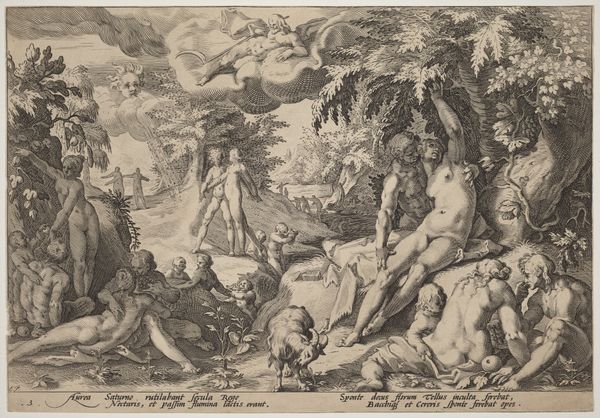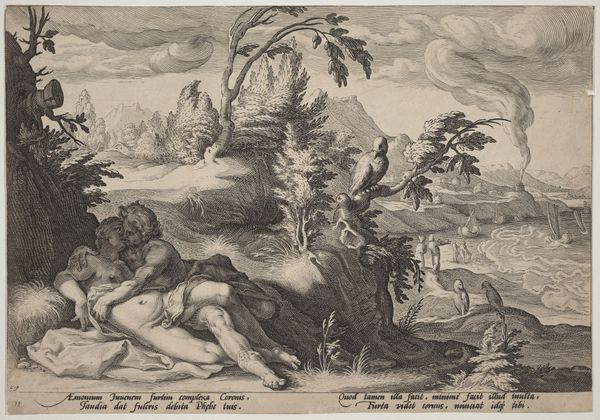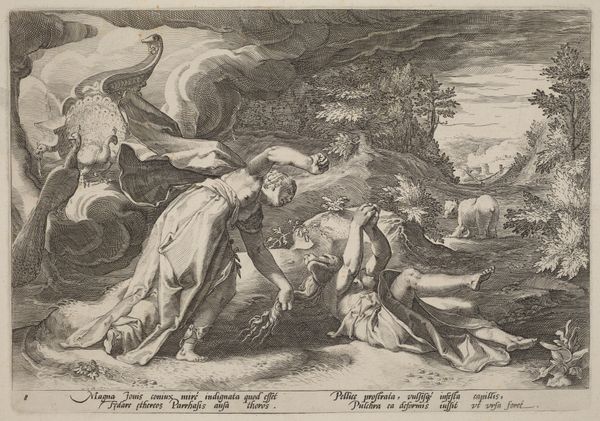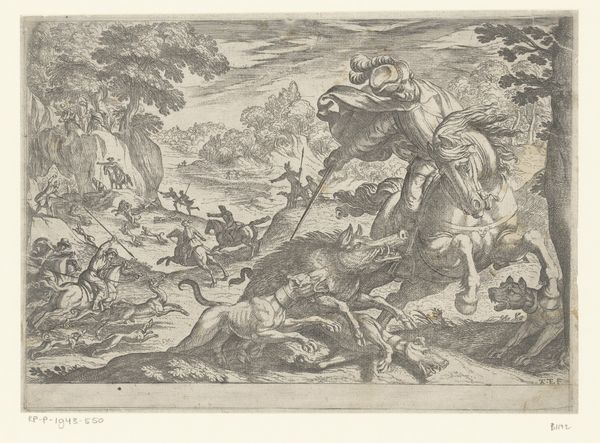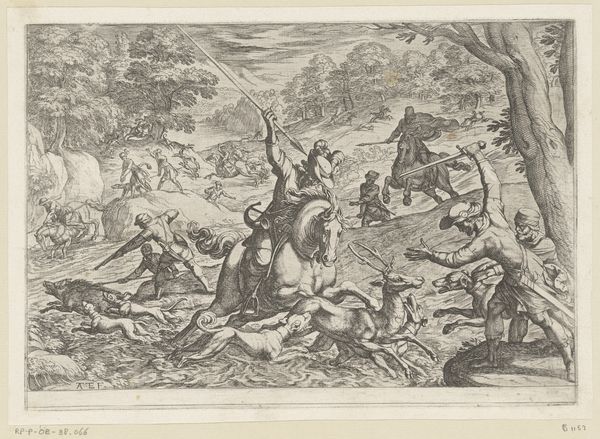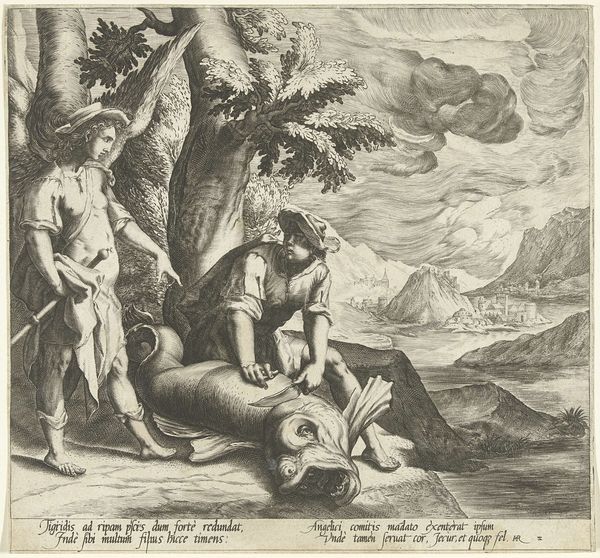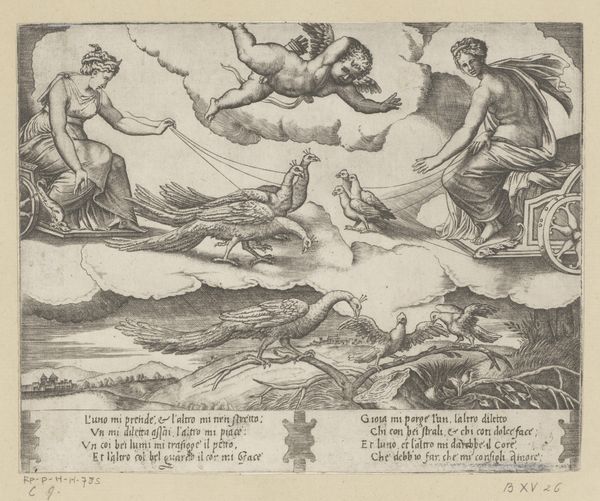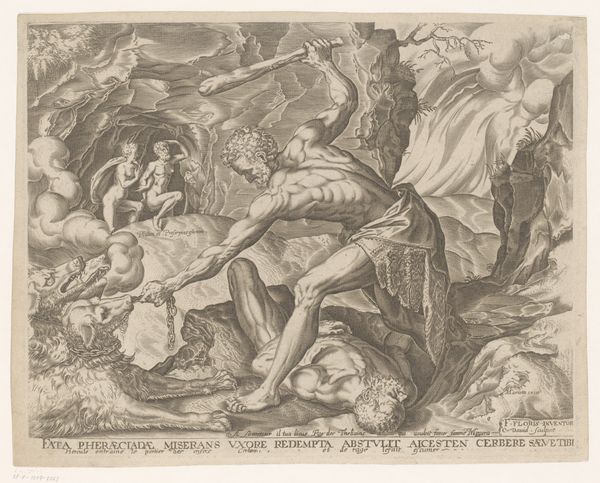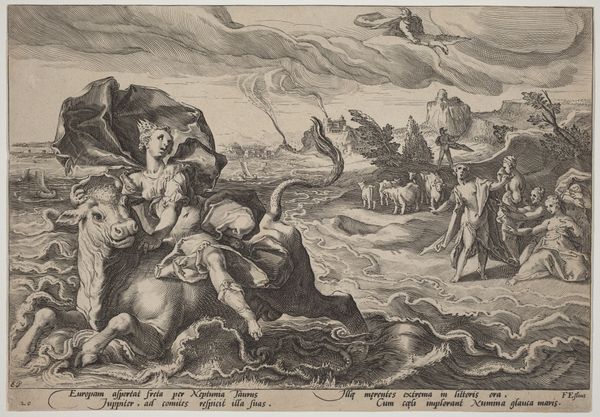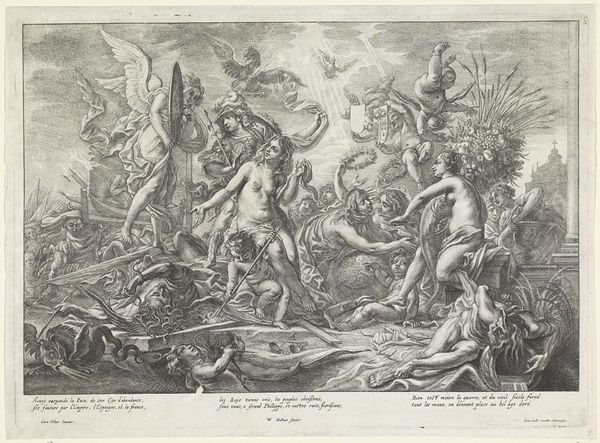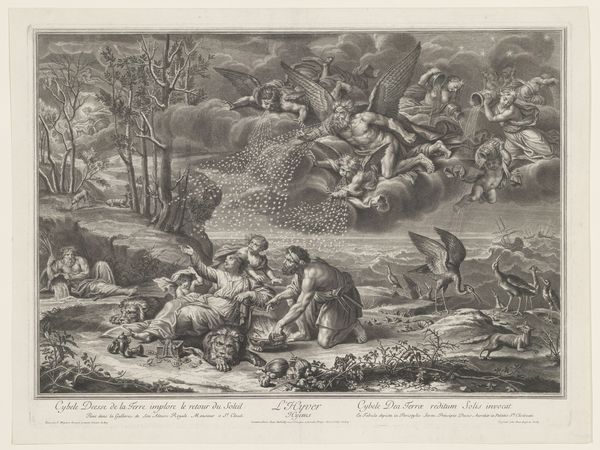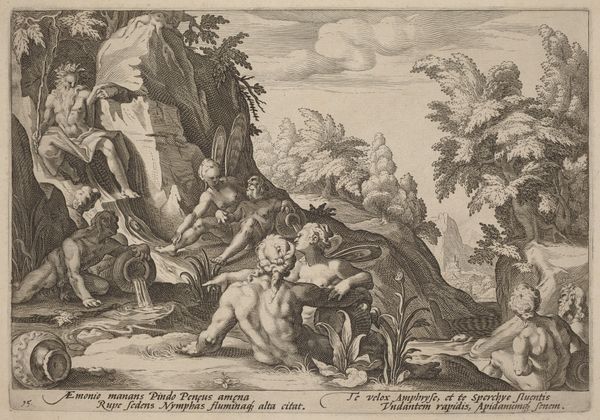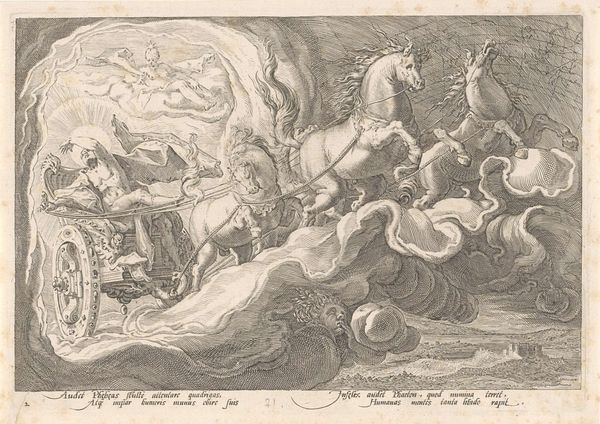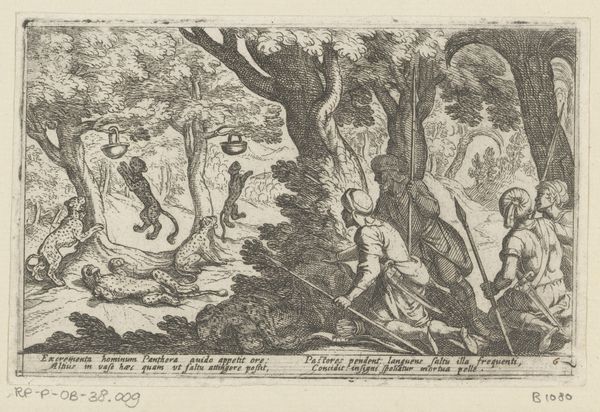
#
toned paper
#
light pencil work
#
ink drawing
# print
#
pen sketch
#
pencil sketch
#
personal sketchbook
#
ink drawing experimentation
#
pen-ink sketch
#
watercolour illustration
#
pencil art
Dimensions: plate: 18.5 x 26 cm (7 5/16 x 10 1/4 in.) sheet: 19.7 x 27.1 cm (7 3/4 x 10 11/16 in.)
Copyright: National Gallery of Art: CC0 1.0
Editor: We're looking at Hendrick Goltzius's "Apollo Killing Coronis," created around 1600, using a printmaking technique. It feels intensely dramatic. The composition really draws you in with its depiction of violence, the figure slumped forward after being shot by Apollo, while he still stands in stride holding his bow, almost majestic, but troubled too perhaps? What strikes you most about this piece? Curator: Ah, Goltzius! He understood drama, didn't he? For me, it’s about the contrast. Look at Apollo, God of light, of healing, but here, delivering death. It's a stark contradiction, almost theatrical in its presentation, no? Notice how the light plays on his figure versus the shadowed figure of Coronis, it amplifies this dichotomy between light and dark, right and wrong, at least from Apollo's perspective in the moment. There are so many shades to explore and discover in an image. Editor: That contrast is really powerful now that you mention it, visually, but also in the morality of the myth itself. Was Goltzius commenting on the complexities of divine justice perhaps? Curator: Precisely! Think about the cultural context too; in the 17th century, these mythological stories weren't just tales – they were moral allegories. Goltzius challenges us to examine Apollo’s actions, question absolute power, and to grapple with this heavy narrative. The composition serves the cultural purpose, inviting that pondering. Even that single crow or raven up in the scene adds a grim accent. It's this multifaceted interplay that elevates the work from just an illustration to a resonant cultural commentary. See now? Editor: Absolutely. It's like a dark fable rendered in ink. Thanks for shedding light on all the layers I was missing. Curator: The pleasure's all mine. Isn’t it fascinating how a single print can be a portal into history, mythology, and the human condition?
Comments
No comments
Be the first to comment and join the conversation on the ultimate creative platform.
